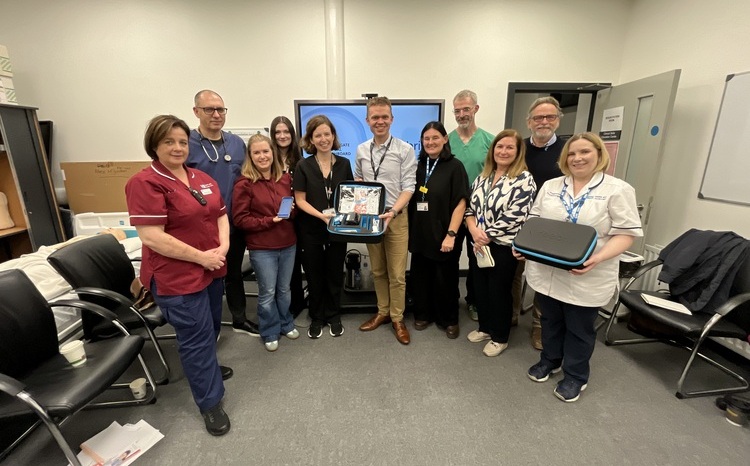Insider view: Jon Hoeksma
- 5 March 2009
 A letter to NHS Connecting for Health staff has shown that major changes are underway at the agency as power shifts to the Department of Health in Whitehall. This leaves unanswered crucial questions about its legacy and the future of NHS IT, says E-Health Insider editor Jon Hoeksma.
A letter to NHS Connecting for Health staff has shown that major changes are underway at the agency as power shifts to the Department of Health in Whitehall. This leaves unanswered crucial questions about its legacy and the future of NHS IT, says E-Health Insider editor Jon Hoeksma.
Five months after Christine Connelly and Martin Bellamy took up key posts at the top of the Department of Health and NHS Connecting for Health respectively www.e-health-insider.com/News/4038/new_leaders_for_nhs_it, changes in NHS IT are finally being made. But they are not the changes that many have been waiting for.
Instead of taking the form of a major shift in policy, a revamp of the stalled National Programme for IT in the NHS contracts, or the introduction of acute systems of choice, they focus on management and organisation. Specifically, they focus on the structure of CfH and the relationship between the agency and the DH; with a decisive shift of power to Whitehall.
CfH is being recast as a delivery agency, reporting to a new team led by Connelly, who will now be responsible for informatics strategy, policy, technology architecture, business issues, clinical engagement and funding. Be in no doubt, this is a major centralisation of power and a hollowing out of CfH. Until recently, any IT strategy the DH had was focused on keeping the PCs in Richmond House working.
It is also surely significant that the letters announcing the the shake-up state that Bellamy’s key objective will be “to deliver elements of the NHS systems portfolio.” NPfIT is described as only a short-term objective for the CfH boss: “In the short term, the main area of focus is the National Programme for IT.” Possible readings might be that CfH or NPfIT – or both – may not have a long-term future.
Learning and forgetting
How such a centralisation of NHS IT fits with the official policy of local ownership, in which responsibility for IT is meant to rest with Strategic Health Authorities, local health communities and individual NHS organisations, is going to be an interesting question.
One industry veteran told EHI last month that CfH looked set to be overhauled just as it had reached a point of maturity and gained an understanding of the complexities of digitising the health service. The prediction has proved accurate. And as with any shake-up, hard won lessons may well now be forgotten and painfully re-learned.
Irreconcilable differences
Meanwhile, although the shift of power to the DH appears to mark the smooth ascendancy of Connelly as chief information officer for health, well-placed sources suggest that behind the scenes her honeymoon proved remarkably short-lived.
Expected to deliver swift results and break the log-jam on the stalled LSP contracts, Connelly did not deliver the clarification she promised by the end of last year and appears to have run into significant difficulties.
Unconfirmed industry sources have told EHI that Connelly presented her initial report to the NHS board in December, but that it was rejected as not reflecting the views of stakeholders. A subsequent report to NHS chief executive David Nicholson was due to have been provided in January. The outcome of this is unknown.
In many ways, Connelly appears to face a thankless task. Indeed, she may even be charged with attempting to reconcile the potentially irreconcilable. Can the LSP contracts be renegotiated, or even broken, without the DH incurring massive penalties?
The fact that a year has passed since Fujitsu’s LSP contract was ended in the South with no prospect of a replacement, and suggestions that damages running into hundreds of millions are still being sought, suggests there are no easy answers.
Stalling for time
Meanwhile, the regional and local fragmentation of NHS IT appears to be deepening. Sources indicate that when Connelly consulted with the NHS late last year, chief information officers in the North East did not support the Lorenzo strategic care records software; but CIOs in the North West did.
CIOs in London were “tentative” about proceeding with Millennium – but first wanted to see it deployment at the Royal Free Hampstead NHS Trust a success. Meanwhile, CIOs in South are frustrated by the choice of a non-working Millennium, and an unavailable Lorenzo.
On the industry side, it has been said that BT and CSC want to continue with their LSP contracts with some changes, while the rest of the supplier industry wants to be able to offer alternatives to the LSP solutions.
This all adds up to a poisonous brew, and it’s clear that the really important decisions need to be taken at a much higher level. Yet given the wider economic problems now faced by the government, there may be little appetite for bringing things to a head.
Against this background, it is perhaps not surprising that the only real changes that are occuring focus on management and power structures. The restructure may prove significant in the longer term, but in the short term, it is likely to compound delays – and do almost nothing to solve the most immediate and pressing IT problems faced by much of the health service.




